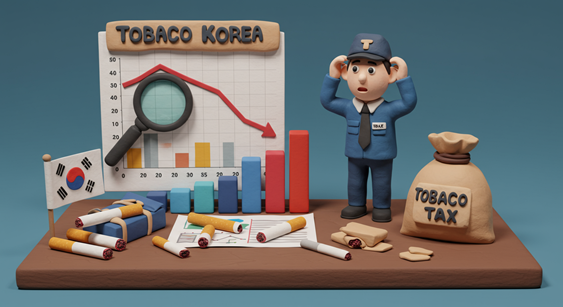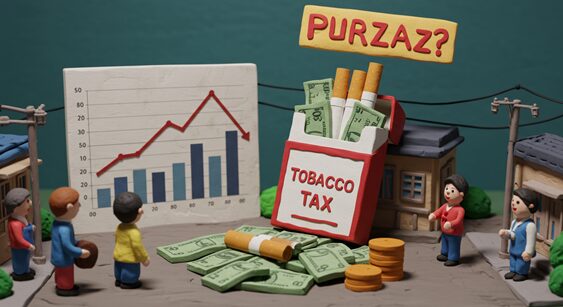Tobacco Tax Paradox: How Korea Maintains Revenue Despite Falling Cigarette Sales
The South Korean government has managed to maintain stable tobacco tax revenue despite a significant drop of 80 million packs in cigarette sales during 2024. This counterintuitive financial phenomenon has caught the attention of economists and health policy experts alike. What explains this apparent contradiction, and what does it reveal about changing consumer habits and tax strategies?
Tax Collection Based on Factory Output, Not Retail Sales
Tax revenue remains stable because Korea taxes tobacco when it leaves factories, not when consumers purchase it.
- South Korea’s tobacco taxation system is based on factory shipments rather than retail sales, creating a disconnect between consumer habits and tax revenue
- In 2024, factory tobacco shipments actually increased to 3.59 billion packs, up from 3.58 billion packs in 2023
- This production-based tax system creates a buffer that temporarily shields government revenue from changes in consumer purchasing patterns
Shifting Consumer Preferences Reshape the Market
Electronic cigarettes are rapidly gaining market share at the expense of traditional cigarettes.
- Traditional cigarette shipments decreased from 2.96 billion packs in 2023 to 2.91 billion packs in 2024
- Electronic cigarette shipments increased from 620 million packs to 680 million packs during the same period
- The market share of electronic cigarettes has grown dramatically from just 2.2% in 2017 to 18.4% in 2024
Tax Structure Creates Revenue Vulnerability
The current tax system applies lower rates to electronic cigarettes, creating a long-term revenue challenge.
- Traditional cigarettes are taxed at 3,323 won (approximately $2.40) per pack
- Electronic cigarettes face a lower tax of 3,004 won (approximately $2.17) per pack, about 320 won less
- This tax differential means that as consumers shift to electronic cigarettes, government revenue will eventually decline despite stable or increasing shipment volumes
Synthetic Nicotine: The Regulatory Blind Spot
Unregulated synthetic nicotine products are creating both public health and fiscal concerns.
- Synthetic nicotine products currently fall outside tobacco regulations and are not subject to tobacco taxes
- The lower cost makes these products more accessible to young consumers, raising health concerns
- Regulating synthetic nicotine could generate an estimated 930 billion won (approximately $671 million) in additional annual tax revenue

The tobacco market’s evolution in Korea demonstrates how changing consumer preferences can outpace regulatory frameworks. While the government has temporarily maintained revenue stability through production-based taxation, the growing shift toward electronic cigarettes and synthetic nicotine products will likely force a comprehensive review of tobacco tax policies in the near future.
Keywords
Tobacco tax, electronic cigarettes, synthetic nicotine, tax revenue
Hashtags
#TobaccoEconomics #SouthKoreaTax #NicotineRegulation
한국어 요약
- 2024년 담배 판매량이 8000만 갑 감소했음에도 불구하고, 반출량 기준 과세 시스템으로 인해 세수는 유지됨
- 궐련담배 출하량은 감소(29.6억 갑→29.1억 갑)한 반면, 전자담배는 증가(6.2억 갑→6.8억 갑)하며 시장 점유율이 2017년 2.2%에서 2024년 18.4%로 상승
- 전자담배에는 갑당 약 320원 낮은 세금(3004원 vs 3323원)이 부과되어, 소비자 선호도 변화로 장기적 세수 감소 우려
- 현재 규제되지 않는 합성니코틴이 규제될 경우, 연간 약 9300억원의 추가 세수가 발생할 것으로 예상됨






